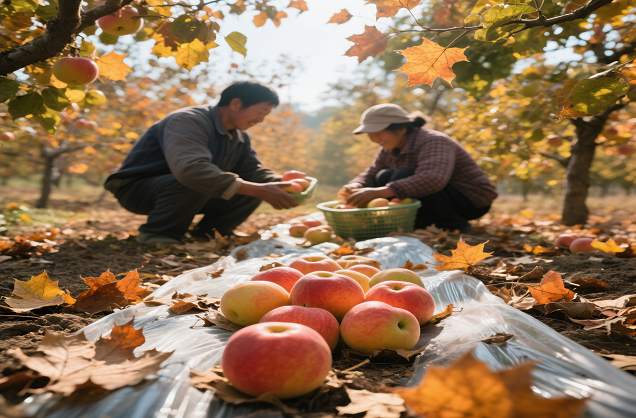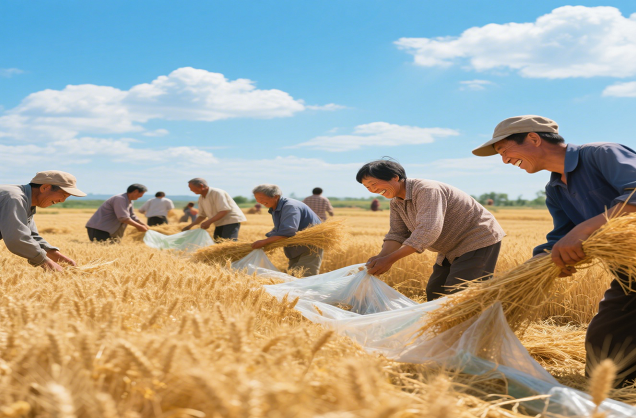The Degradable Materials Revolution: A Brief History of PLA, PBAT and Corn Starch
In the battle against global plastic pollution, PLA (polylactic acid), PBAT (polybutylene adipate/terephthalate), and corn starch, as the three pillars of biodegradable materials, have been game changers in packaging and agriculture.

PLA: From Medical Wizard to Environmental Pioneer
1930-1960: An Unexpected Discovery in the Laboratory
– 1954: DuPont obtained the first PLA synthesis patent (US2668162)
– PLA cost more than $1,000 per kilogram during this period, limited to high-end medical research
1970-1990: The Golden Age of Medicine
– 1966: U.S. Army Institute of Surgical Research develops PLA absorbable sutures.
– 1974: PLA bone nails were first successfully used for clinical fracture fixation
– 1987: Shimadzu Corporation in Japan built a pilot PLA production line
After 1997: A new era of environmentally friendly materials
– 1997: NatureWorks was founded, starting the first year of PLA industrialization.
– 2003: PLA prices fell below the $3/kg mark for the first time.
– 2023: global PLA production capacity exceeded 800,000 tons, accounting for more than 40% of China
Second, PBAT: the green reversal of petroleum-based materials
1920-1960: accumulation of basic science
– 1928: German chemists synthesized aromatic-aliphatic copolyester for the first time.
– 1950s: DuPont developed PBAT precursor technology for specialty fibers.
1990s: Environmental awareness leads to breakthroughs
– 1993: BASF launches the “Ecoflex” secret development program.
– 1998: First commercially available PBAT at a price of US$15/kg.
– 1999: PBAT is certified compostable by the European Union (EN13432).

The Rise of Chinese Power
– 2005: CAS breaks through the technical barrier of PBAT localization
– 2016: JDF built Asia’s largest PBAT production line
– 2022: China’s PBAT production capacity accounts for 75% of the world, and the price drops to $2/kg
Third, corn starch: the oldest modern solution
19th century: the dawn of industrial application
– 1840: Britain granted the first starch modification patent
– 1890s: starch started to be used in paper and textile sizing
The awakening of environmental awareness
– 1973: The oil crisis leads to a boom in starch-based plastics research
– 1985: Novamont, Italy, launches first starch-based shopping bag
– 1990: Starch-based plastics are produced in 10,000 tons for the first time.
A New Era of Technology Integration
– 2008: Starch/PLA composites break through the strength bottleneck
– 2015: Film with 30% starch content reaches PE mechanical properties
– 2023: the global starch-based plastics market size of 3.5 billion U.S. dollars
Four, five milestones that changed the world
1.1997 PLA industrialization:
NatureWorks was founded
Production capacity: 14,000 tons/year
Price reduced from $1000/kg to $5/kg.
2.2005 China’s technological breakthrough:
Chinese Academy of Sciences developed new PBAT process
Reduced production cost by 40
Promote the outbreak of Asian market
3.2015 Modified Starch Revolution:
Starch compatibilizer technology matured
Starch content increased to 50%
Significant improvement in product transparency
4.2020 Global Plastic Ban Wave:
67 countries implement plastic restrictions
Demand for biodegradable materials grows by 300
China’s “Toughest Plastic Restriction” in force
5. 2023 Circular economy takes shape:
PLA/PBAT/starch ternary system is mature.
Degradation time can be controlled in 3-12 months.
Cost gap with PE narrowed to 20

Future Prospects of Materials Science
Technological frontier breakthrough:
– Fourth-generation PLA: Corbion launches new varieties with heat resistance of 120°C in 2022
– Intelligent PBAT: BASF releases photo-biological dual degradation formula in 2023
– Nanostarch: MIT develops nanostarch composites with 5-fold increased strength by 2021
Market Growth Forecast:
– Global Degradable Plastics Market Size:
2023: $8.2 billion
2025 (forecast): $12 billion
2030 (forecast): $28 billion
– Regional Distribution:
Asia: 58% market share
Europe: 23 percent
North America: 15 percent
If you have any questions you want to know, please feel free to come and consult, and we will be eager to answer them for you.
Contact us now
Fill out the form below
We will contact you immediately.

Summarize your business so the visitor can learn about your offerings from any page on your website.
About
Contact
- Add: Room 4006, No.1 Helong Yiheng Road, Baiyun District, Guangzhou City
- Tel: +8613450255948
- Wechat : +86-13450255948
- Fax: +86-13450255948
- E-mail: 13450255948@163.com
